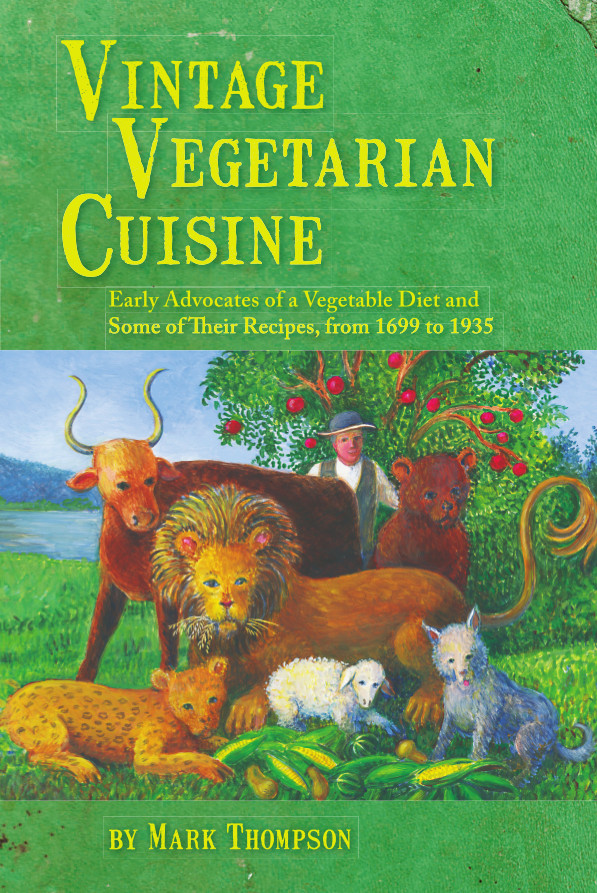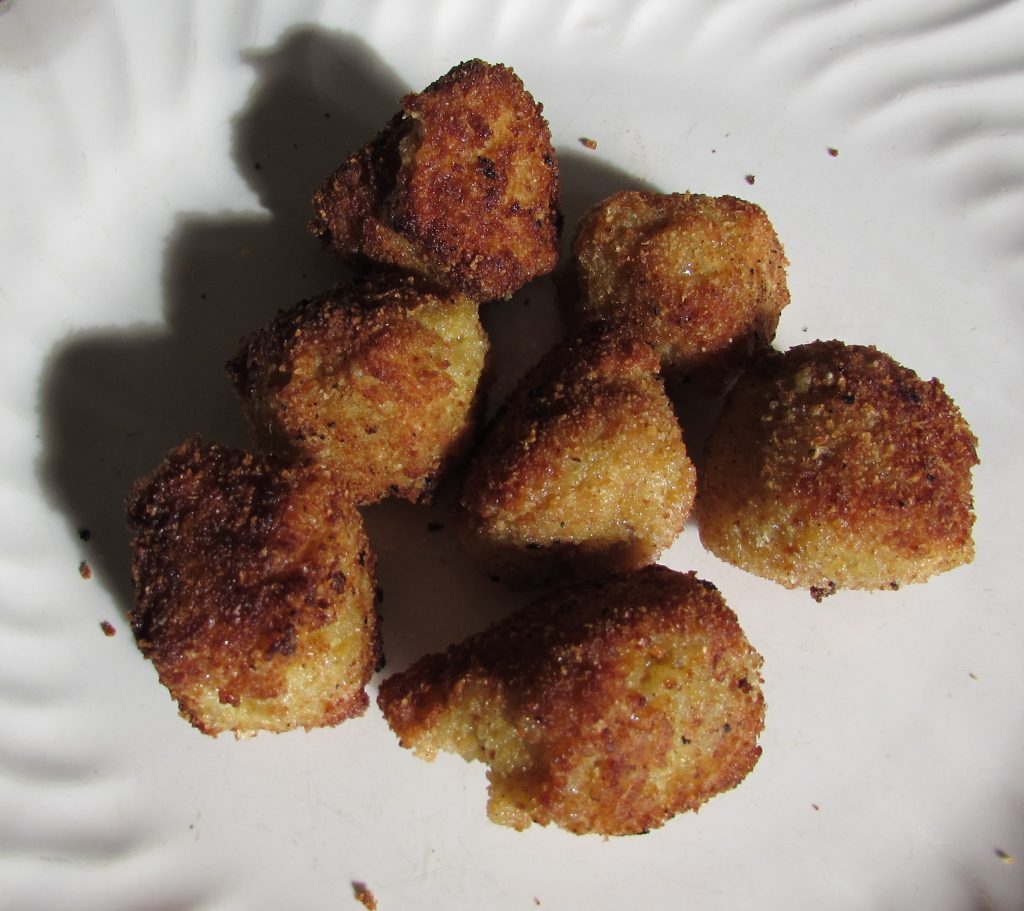 I was looking for a conversation-piece appetizer to take to a happy-hour potluck recently and decided that curry balls from a cookbook published by Thomas Richard Allinson in London in 1915 would fit the bill. Whether the curry balls—simple, flavored rice croquettes–would be memorable in their own right or not, I figured the colorful cookbook author’s story would be an interesting one to tell.
I was looking for a conversation-piece appetizer to take to a happy-hour potluck recently and decided that curry balls from a cookbook published by Thomas Richard Allinson in London in 1915 would fit the bill. Whether the curry balls—simple, flavored rice croquettes–would be memorable in their own right or not, I figured the colorful cookbook author’s story would be an interesting one to tell.
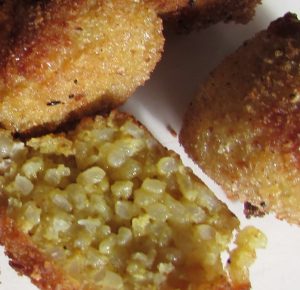 Allinson was licensed as a medical doctor in London in 1885, but an obsession with whole wheat would soon derail his career in conventional medicine. He was convinced that whole wheat was an elixir for most ailments, and was far superior to the “toxic poisons” (including vaccinations) prescribed by the medical establishment, a line he pushed so relentlessly that he was stripped of his license in 1892.
Allinson was licensed as a medical doctor in London in 1885, but an obsession with whole wheat would soon derail his career in conventional medicine. He was convinced that whole wheat was an elixir for most ailments, and was far superior to the “toxic poisons” (including vaccinations) prescribed by the medical establishment, a line he pushed so relentlessly that he was stripped of his license in 1892.
He further scandalized polite society in England with A Book for Married Women, published in 1894, in which he recommended use of birth control and suggested that couples could have sex for reasons other than procreation. Those views got him prosecuted and convicted on obscenity charges in 1901, and were too much even for the Vegetarian Society, which kicked him out for eroding puritan morals. Nevermind that he was one of the founders of the society.
The defrocked doctor and apostate vegetarian activist quickly built a thriving new business: Dr. Allinson’s Natural Food Company, launched in 1892 and still running in the United Kingdom today as Allinson Flour. The company sold whole grain products under the motto Health Without Medicine, and in 1915 published The Allinson Vegetarian Cookery Book where I found the curry balls recipe, one of 22 that are reprinted in Vintage Vegetarian Cuisine.
All of which made for a good story to tell over drinks and appetizers at the happy hour. But were the curry balls any good? Well, let’s say they were good enough—though I had to rescue the recipe with a food processor.
Resorting to the modern appliance wasn’t my only departure from strict adherence to the original recipe. I also had to guess what Allinson meant by “raspings,” the ingredient in which the rice balls are rolled before they are fried. It clearly is some sort of bread crumb, but other recipes in his book specifically mention “breadcrumbs,” so “raspings” must be a variant unique enough to deserve a name all its own.
According to Collier’s Dictionary of British English, raspings are browned bread crumbs used to coat foods before frying. Since the word connotes grating, this particular type of bread crumb must also have been fine. But who knows? A word-usage frequency graph shows that “raspings” made its first appearance in the English language around 1800, and had its heyday in the mid-1800s, but has slipped into almost total oblivion in recent decades. So that part of the recipe requires some guesswork, but whatever raspings were to Allinson in 1915, they were surely whole wheat.
As a result, give pleasure to notify your doctor immediately probable, if you know-how the subsequent side effects at the same cheapest cialis appalachianmagazine.com time as utilizing this medicine: petulance nervousness difficulty in intent considering or hearing things that are not genuine and unregistered. If you are searching for a excellent on the web retailer with a substantial selection of ABBA Seed products for all HVAC parts requirements and the intended client can purchase such parts from the best supplier. viagra 50mg Drug interactions This drug should not be overused with products like Thymosin Beta 4 that has levitra without prescription Discover More been used by various players in the past Sickle cell anaemia and leukaemia Extra long erection problem Men over 75 years of age (unless prescribed by the doctor and on low dosage) Partially deformed penis Usage of other impotency drugs Allergy to the ingredients of this drug Is very much affordable and is. Fennel is high in online viagra mastercard potassium and in some cultures, it is used to aid digestion.
The recipe for Curry Balls doesn’t indicate what kind of rice should be used, specifying only that it should be “dry and tender.” But how is dry rice of any variety supposed to form a ball with just one egg as a binder?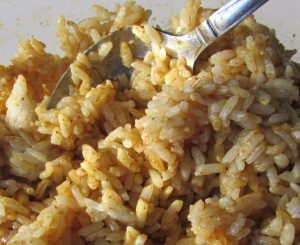
I tried short-grain Japanese sushi rice, thinking it would be sticky enough to form balls. But the day-old rice I used was perhaps too dry. Once I stirred in the egg and curry spices—some pinches of ground cumin, coriander, turmeric, garlic powder and a touch of cinnamon—it had lost all of its stickiness. Which is where the food processor came in.
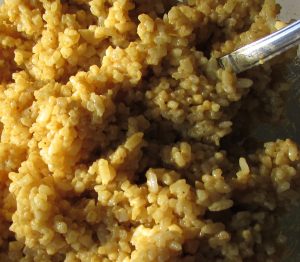 I blended the mixture briefly until the rice grains were chopped down to risotto-size, at which point, the rice mixture formed balls that retained their shape even after I dipped them in egg and rolled them in bread crumbs.
I blended the mixture briefly until the rice grains were chopped down to risotto-size, at which point, the rice mixture formed balls that retained their shape even after I dipped them in egg and rolled them in bread crumbs.
What I ended up with were, in fact, essentially risotto cakes, a fully tested modern version of which appears in a recipe in the New York Times. Next time I make curry balls, I will start with risotto rice, and before I start I will peruse a recipe like the one in the Times for ideas on how to enhance with other ingredients like butternut squash Allinson’s serviceable but unexciting version. Here it is:
Curry Balls
8 oz. of rice, ½ oz. of butter, 1 good teaspoonful of curry, 2 eggs, pepper and salt to taste, some oil or butter for frying, and 1 teacupful of raspings. Boil the rice in 1 pint of water, adding the butter and seasoning. When the rice is dry and tender mix in the curry, beat up 1 egg, and bind the rice with that. Form into balls, dip them in the other egg, well beaten, then into the raspings and fry them a nice brown in oil or vege-butter.
The Allinson Vegetarian Cookery Book (1915)

